- EraPharaonic
- Project DirectorKhaled Abdel Ghany
- LocationThe Egyptian Museum in Cairo (EMC) & The Valley of the Kings (KV 38)
- AffiliationUniversity of Göttingen
- Project SponsorAntiquities Endowment Fund
- Project dates2022 - 2023
Written by: Khaled Abdel Ghany
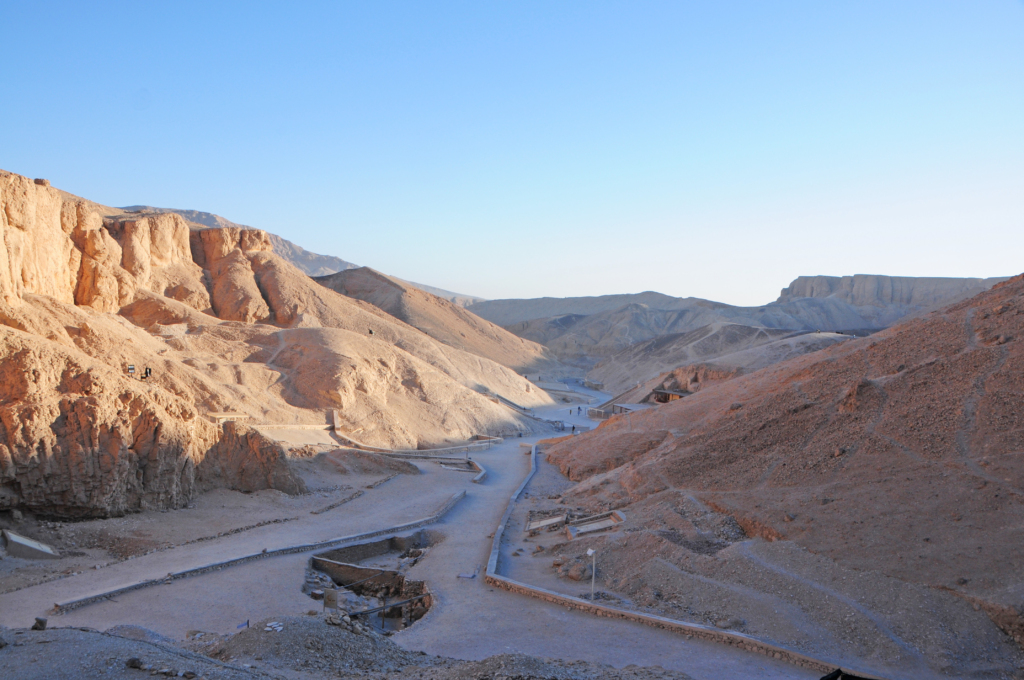
Fig. 1: The view of the southwest branch of the Valley of the Kings (Photo: Khaled Abdel Ghany)
Since the discovery of the tombs KV 38 by V. Loret in 1899 and KV 20 by H. Carter in 1903, there has been an ongoing discussion on the identification of the earliest royal tomb in the Valley of the Kings (Fig. 1), raising the question of whether it is KV 38 (Thutmose I) or KV 20 (Hatshepsut). In addition to this discussion, a vivid debate arose about the dating of the limestone Amduat specimen discovered in both tombs, attempting to determine the reign to which it belonged and the tomb from which it originally came.
The main focus of the project: “Investigations of the religious history of the early 18th Dynasty: Documentation and Conservation of the Amduat Specimens from the Tomb of Thutmose I (KV 38),” funded by the Antiquities Endowment Fund (AEF) for the year 2022/2023, is to exploit the extensive unexplored religious resources of theological underworld books. Therefore, the primary objective of the present research is the documentation and conservation of the two royal specimens of the Amduat-book that represent the earliest sources of the afterlife books of the early 18th Dynasty. Both specimens’ processing and analysis results contribute to a fundamental clarification of the dating question of the two previous tombs and the dating of the underworld’s oldest books of the 18th Dynasty. These funerary literature texts also served the deceased king as an afterlife guide in his tomb, to ensure his prosperity in the realm of the dead and benefit him in the afterlife.
The first Amduat version was discovered in the tombs KV 38 and KV 20. This version is currently located in the Egyptian Museum in Cairo and is depicted on the seventeen limestone slabs (Fig. 2). These slabs are dirty and damaged from salt efflorescence and bat habitation within the tomb. Bat urine and bird excrement had covered the surfaces of the slabs with heavy bat staining and black deposits.
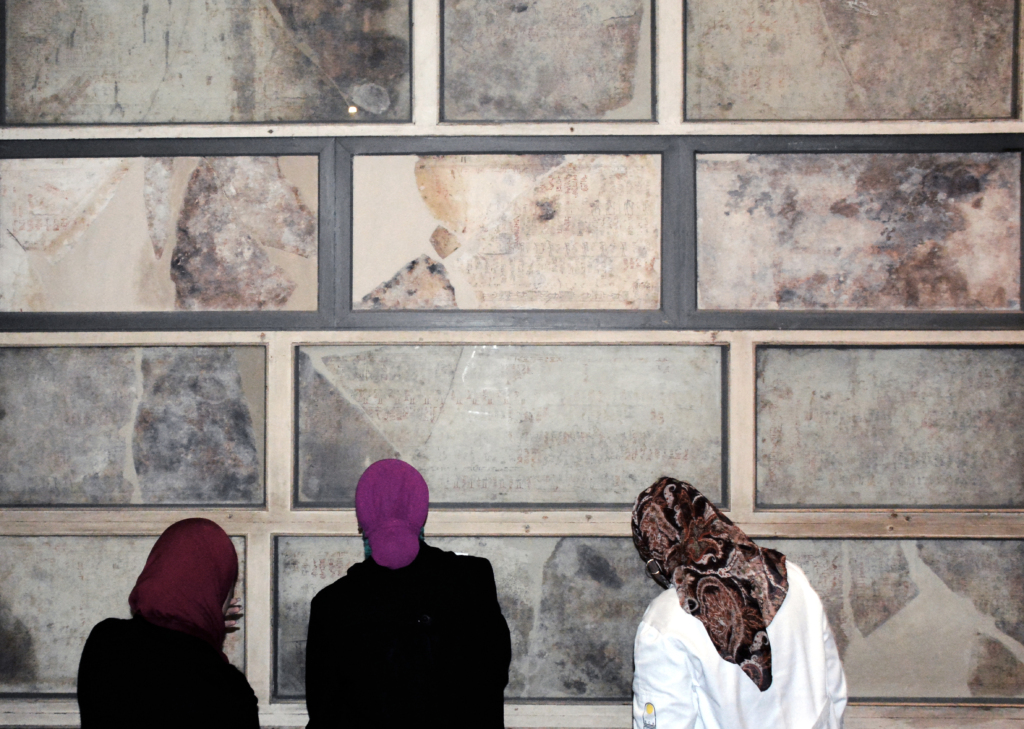
Fig 2. The limestone slabs of Amduat at the Egyptian Museum Cairo before conservation work (Photo: Sameh Abdel Mohsen)
The surface must be cleaned and removed from the dirt to investigate the pictorial representations and religious texts on panels. The conservation treatment plays a dominant role in displaying the details of Amduat-depictions and interpreting the text contents.
Nanotechnologies help preserve these extraordinary funerary materials and offer conservators a practical method of keeping up with the latest techniques. Nanorestore cleaning systems are particularly effective at removing built-up deposits and hydrosoluble dirt from stone artefacts.
The conservators at the Egyptian Museum Cairo did an excellent job of removing the dirt from the slabs since the surface of the blocks was disfigured with a heavy accumulation of deposits (Fig. 3). All the fragments and slabs have been cleaned, and their parts reconstructed in the correct order so that the Amduat hours are assembled in the correct sequence (Fig. 4).
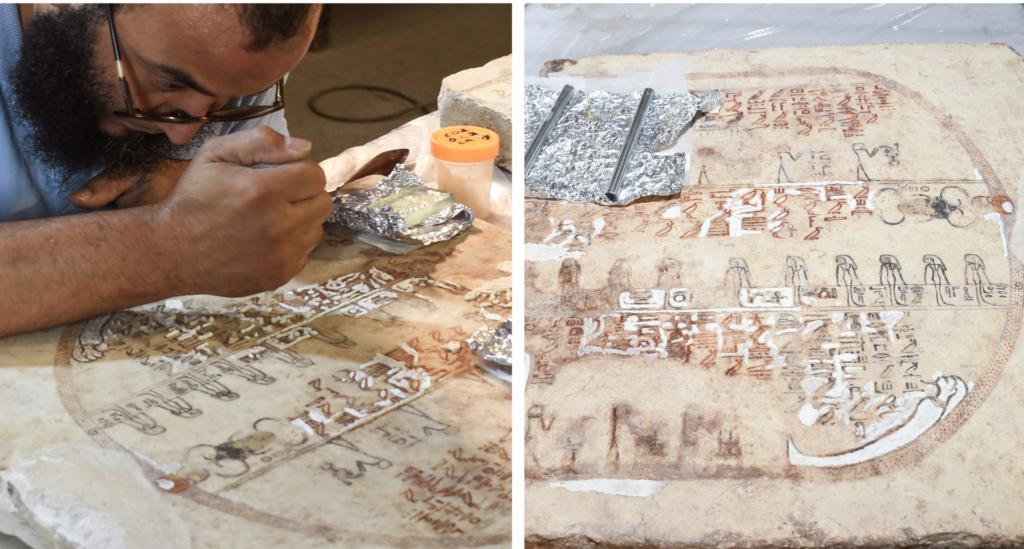
Fig. 3: Cleaning of the limestone slab of Amduat (M) (Photo: Khaled Abdel Ghany)

Fig. 4: The limestone-Amduat-slab (J) before and after the cleaning (Photo: Sameh Abdel Mohsen)
The other Amduat specimen was discovered in 2016 by K. Abdel Ghany in the burial chamber of the tomb KV 38. This version is illustrated on the mud-plaster fragments, which are the remains of the decorative cliff walls of the tomb. These numerous fragments can be considered a success for researching the early history of the Amduat since they have never been discussed or mentioned before. The tomb KV 38 is relatively unprotected; the entrance is much lower than ground level (Fig. 5).
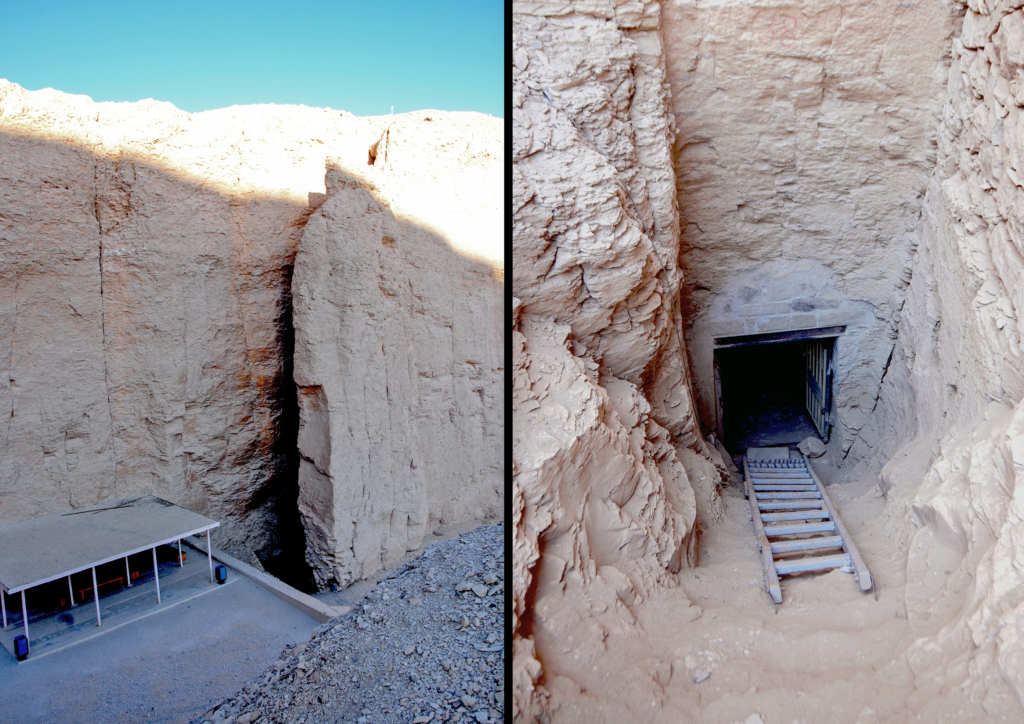
Fig. 5: The entrance of the tomb KV 38 (Photo: Khaled Abdel Ghany)
As a result, the decorative walls in the burial chamber have been heavily affected by infiltrating rainwater. Therefore, the found Amduat plaster fragments are in poor condition, partially dirty, and soiled with rainwater deposits. Thus, the project aims to restore the newly discovered mud-plaster fragments to reconstruct their displayed iconography and further explore KV 38 to search for more fragments or finds.
During this exploration in early 2023, we discovered more small mud-plaster fragments of the Amduat book. Due to the previous inflow of rainwater into the tomb, these fragments are contaminated and covered with a solid sedimented layer of dust, and in a very weathered condition. The conservators in Luxor were able to reassemble the small fragments and uncover the depiction from contamination (Fig. 6).
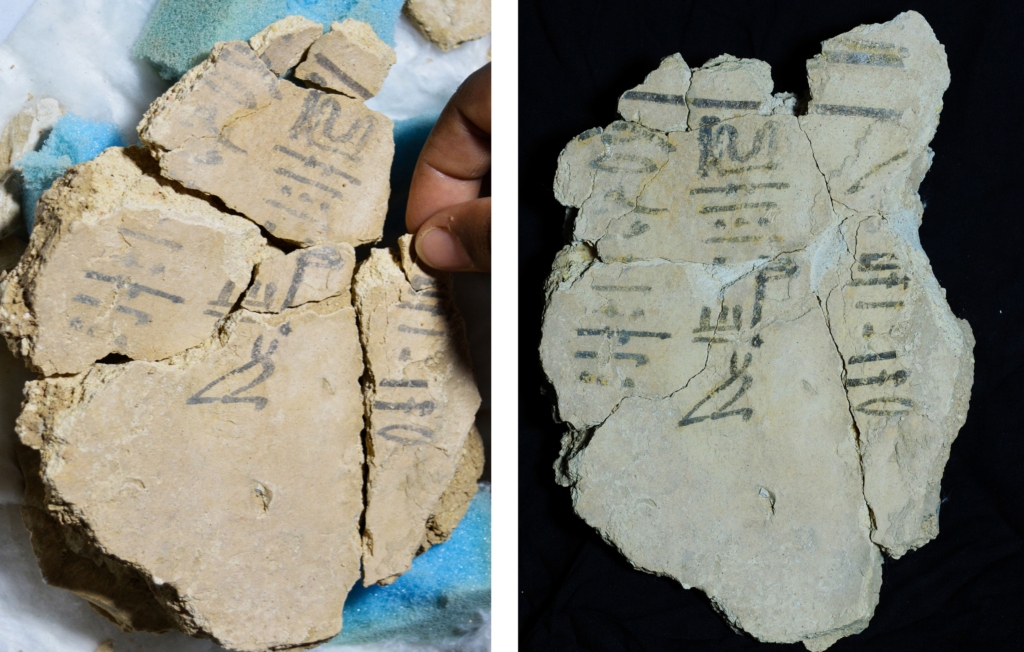
Fig. 6: Assembling the small mud-plaster fragments of the eighth Hour of Amduat (Photo: Khaled Abdel Ghany)
After a comparative analysis of the paleographic and iconographic features of the displayed scenes on the newly found Amduat fragments with similar scenes from the tomb KV 34, it could be proved that there is a definite development between the time of Thutmose I and his successors. Furthermore, these sections highlight the iconographic features of the Amduat version of Thutmose I – their characteristic attributes and archaic decoration style form the original basis on which all subsequent versions have been built. Thus, this version could be dated much earlier than the version of Thutmose III and presents the oldest version of royal funerary literature of the Amduat-book in the New Kingdom.
During excavation work in the burial chamber to uncover the floor from debris, we found two quartzite stone fragments under the tomb rubble. The inscriptions on it show King Thutmose I’s throne name (aA-xpr-<kA>-Ra) engraved and enclosed in a cartouche. These two fragments (6 cm high x 6.5 cm wide and 10 cm thick) probably formed part of the king’s original sarcophagus (Fig. 7).
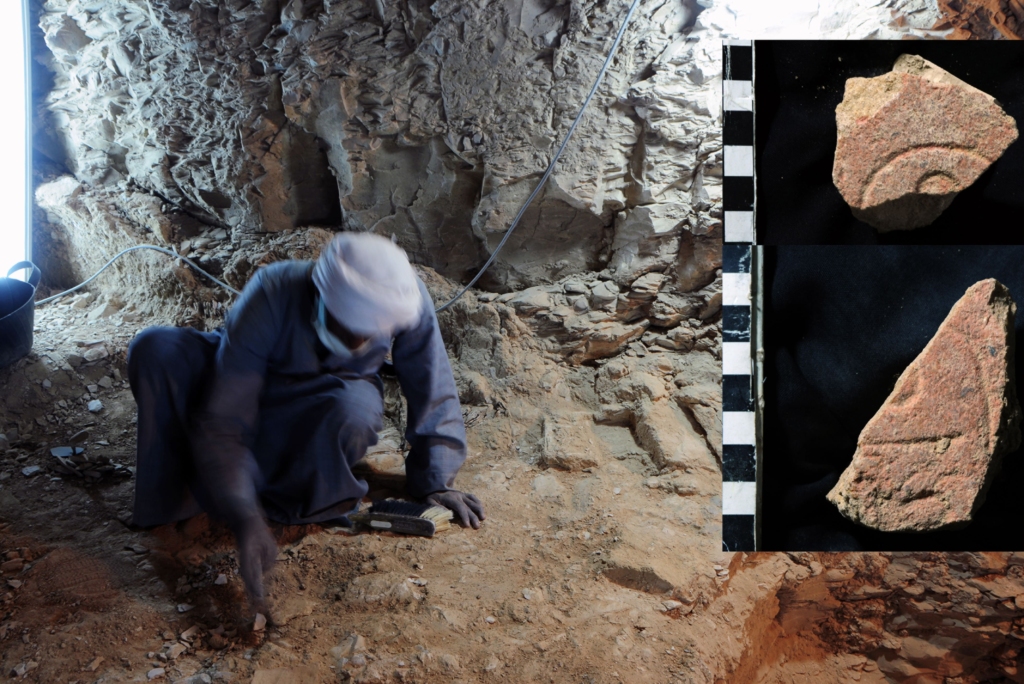
Fig. 7: Uncovering the floor of King Thutmose I’s burial chamber and finding two quartzite stone fragments under the tomb rubble with the name of the king (Photo: Khaled Abdel Ghany)
Excavating tomb KV 38 yielded another unexpected discovery. On the northern side of the burial chamber, the workers found a large limestone royal funerary slab. The limestone Amduat slab (45 cm high x 38 cm wide and 8 cm thick) is shown in a section from the second hour of the Amduat book (Fig. 8). This slab belongs to the small limestone fragments of the 2nd hour of the Amduat book, found in the same tomb by V. Loret in 1898 and now in the Egyptian Museum Cairo. Therefore, I could prove that the Amduat Book was already known during the reign of Thutmose I, and all fragments originate from only one tomb, namely from Thutmose I (KV 38), and neither from two different tombs nor from different reigns.
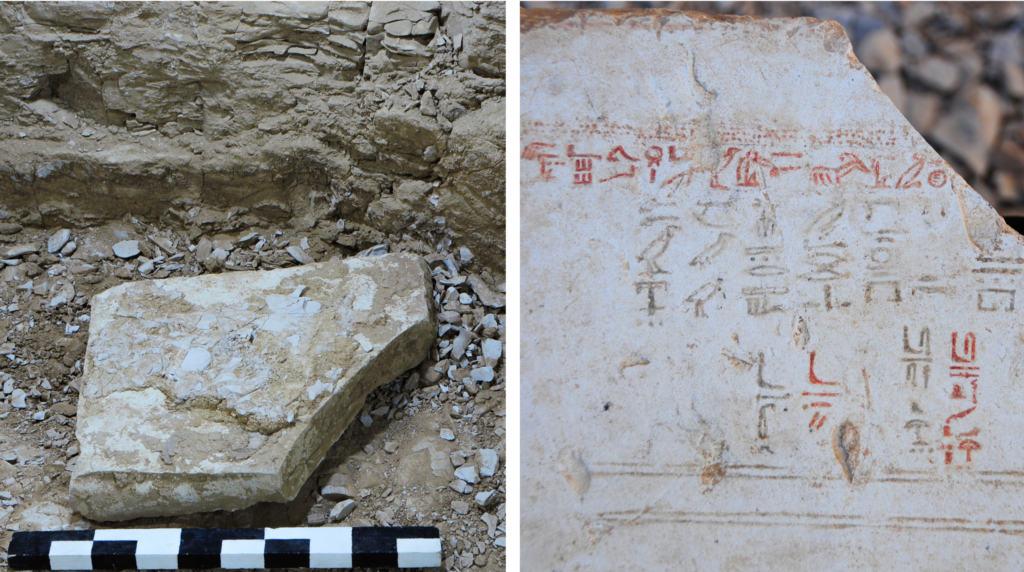
Fig.8: The new discovered limestone slab of Amduat at the north side of the burial chamber (Photo: Khaled Abdel Ghany)
Finally, I thank the Ministry of Tourism and Antiquities (MoTA) and the American Research Center in Egypt (ARCE) for their practical support in the above project. The help of the Antiquities Endowment Fund allowed us to address the growing problem of conserving, restoring, and investigating these weathered slabs and fragments. Moreover, I would like to thank my teamwork for the outstanding achievement in the Valley of the Kings (KV38) and the Egyptian Museum Cairo.